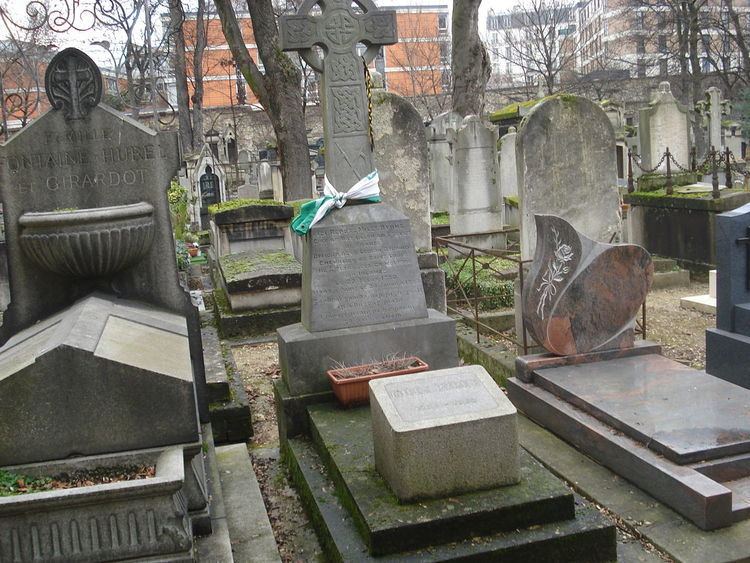Occupation Soldier. Spouse Fanny Horner (m. 1835) Name Myles Byrne | Religion Roman Catholic Known for Irish Rebel (1798) | |
 | ||
Buried Montmartre Cemetery, Paris, France Political party Society of United Irishmen People also search for Anthony Perry, John Murphy | ||
myles byrnes sings justin beiber baby
Myles Byrne (20 March 1780 – 24 January 1862) was a leader in the Irish Rebellion of 1798 and chef de bataillon in Napoleon’s Irish Legion.
Contents
- myles byrnes sings justin beiber baby
- Early life
- 1798 Rebellion Aftermath
- France the Irish Brigade and Memoirs
- Marriage
- Photo
- Death
- References
Early life
Myles (he usually spelled his name Miles) Byrne was born in the townland of Ballylusk near Monaseed, County Wexford, Ireland, on 20 March 1780, into a Catholic family.
1798 Rebellion & Aftermath
Byrne participated in preparations for the 1798 Rebellion, fought at Oulart, Enniscorthy, the Battle of Clough (or Battle of Tubberneering), the Battle of Arklow, the Battle of Vinegar Hill, Castlecomer and Ballygullen at the age of 18. After the Wexford Rebellion was over, he joined Michael Dwyer and Joseph Holt in the Wicklow Hills, continuing to fight on. Next he settled in Dublin. While there he was involved in the Emmet Rebellion (1803).
In his Memoirs he describes a meeting he arranged between Robert Emmet and Thomas Cloney (of Moneyhore, Co. Wexford) at Harold's Cross Green, Dublin, just prior to Emmet's Rebellion:
"I can never forget the impression this meeting made on me at the time - to see two heroic patriots, equally devoted to poor Ireland, discussing the best means of obtaining her freedom."
France, the Irish Brigade, and Memoirs
Shortly after this he escaped to France. In France he eventually became Brigadier General and leader of Napoleon’s Irish Brigade, and was awarded the Legion of Honour. He fought in Spain and Greece. In his later years he wrote his memoirs, Memoirs of Miles Byrne, which are an account of his participation in the Irish rebellion and his time in the Irish Brigade. These were first published in three volumes in 1863 (under the direction of his widow, Fanny), but there have been many subsequent reprints.
Stephen Gwynn who edited and published a new edition of Byrne’s Memoirs in 1907, stated in his Introduction to Volume 1:
“I owe my acquaintance with these Memoirs to Mr John Dillon, who spoke of them as the best of all books dealing with Ireland; and a reading of the volumes left me inclined to agree with him.”
For those areas and battles that it covers, Byrne's is the best source for the 1798 Rebellion.
In Paris, Byrne frequently met many other exiled Irish - including Thomas Addis Emmet (brother of Robert) and James Devereux (of Carrigmannon, Co. Wexford).
Marriage
Byrne was married (1835) in Paris to a Scots Presbyterian, Fanny Horner, (1789 - 1876) (originally from George Square, Edinburgh, Scotland) but they had no children. Fanny's father was John Horner, a "merchant of Edinburgh", and her mother was Joanna Baillie. They were married on Christmas Eve, 24 December 1835 in the British Embassy Chapel in Paris. She had three brothers and two sisters. One of her brothers was Francis Horner (1778 - 1817), a Whig MP; another, Leonard Horner (1785 - 1864), was a noted geologist.
Photo
A photograph of Byrne faces page 185 in Nicholas Furlong's "Fr John Murphy of Boolavogue: 1753-1798" (Dublin, 1991). According to the author, it was taken in Paris in 1859 and is reputed to be the first photograph taken of an Irishman. The photograph is now in Áras an Uachtaráin, the residence of the President of Ireland, in Dublin.
John Mitchel visited Byrne when he was 80 years old and described him as "One of those rare beings who never grow old".
Death
Miles Byrne died at his house in the rue Montaigne (now rue Jean Mermoz, 8th arrondissement, near Champs-Élysées), Paris on Friday 24 January 1862, and was buried in Montmartre Cemetery. His grave there is marked by a Celtic Cross - but this headstone appears to be a 1950s replacement for an earlier one. The inscription to his original headstone appears in his Memoirs; in part, it read:
SINCEREMENT ATTACHE A L'lRLANDE
SON PAYS NATAL,
IL A FIDELEMENT SERVI LA FRANCE
SA PATRIE ADOPTIVE.
